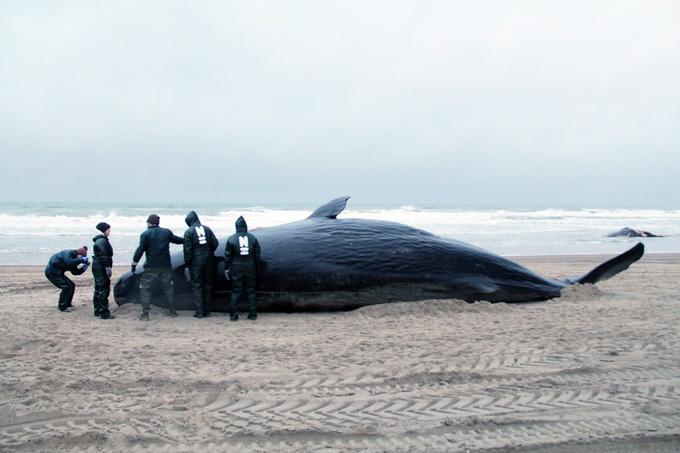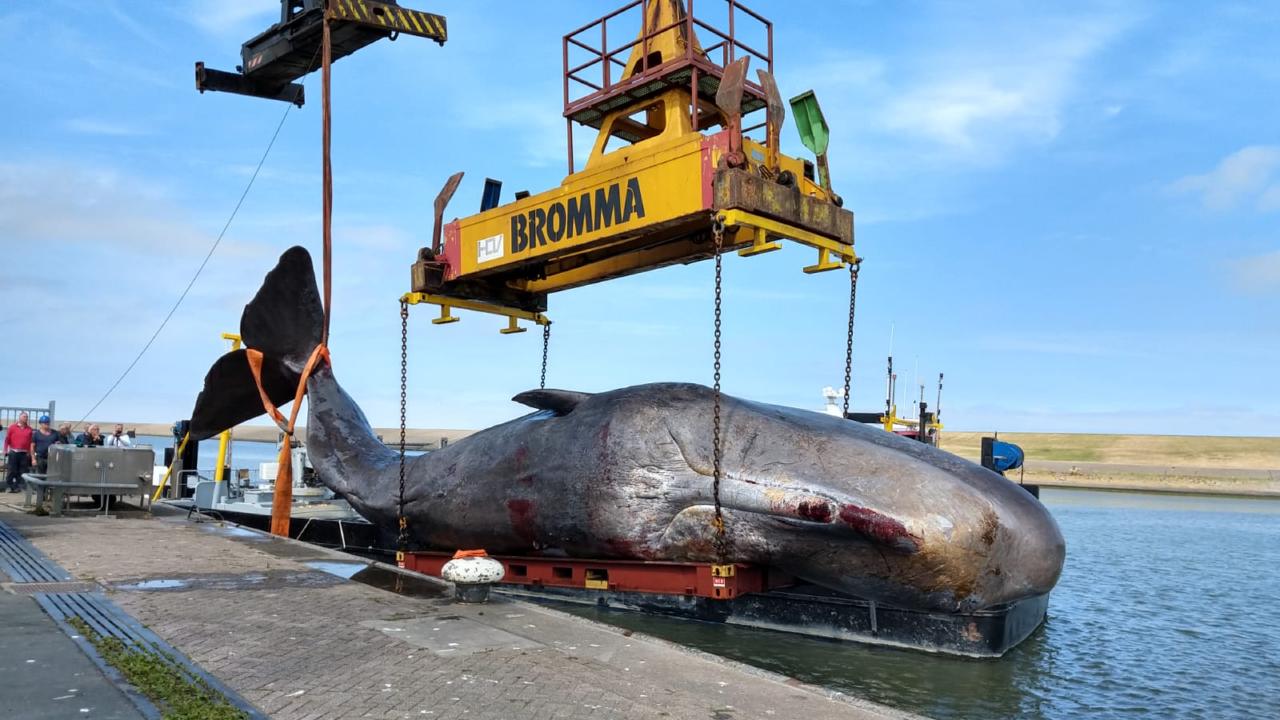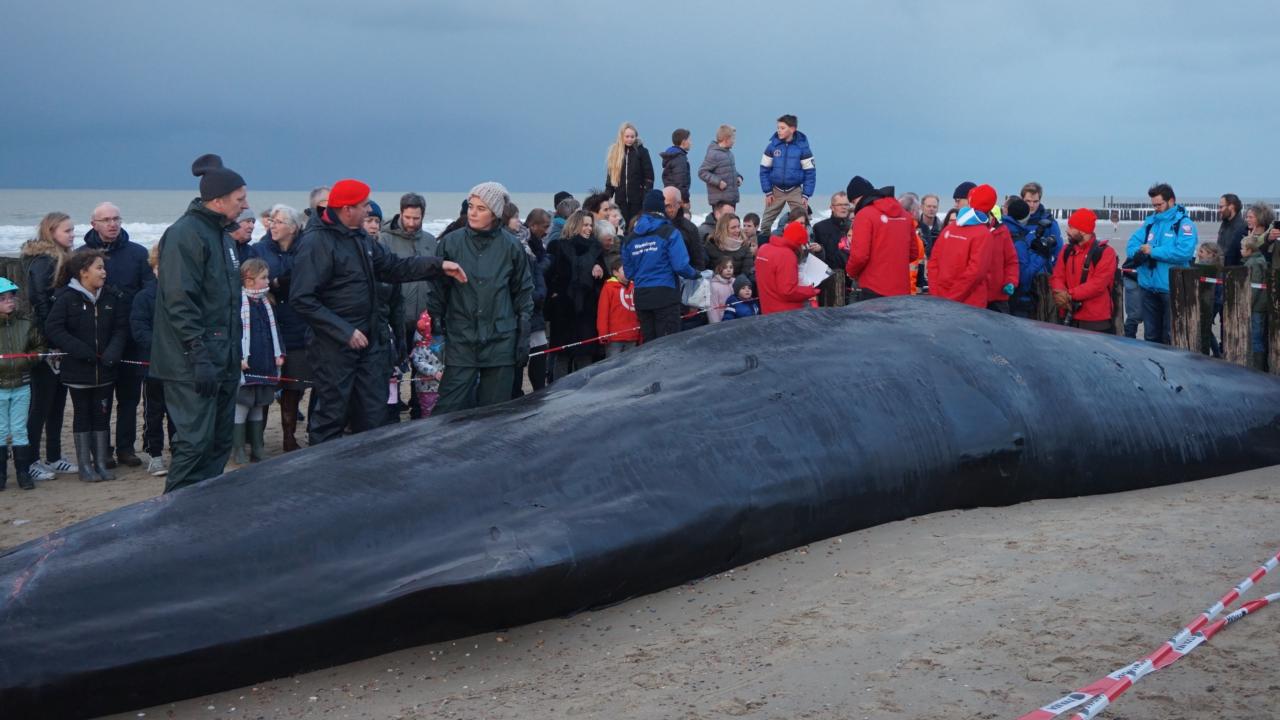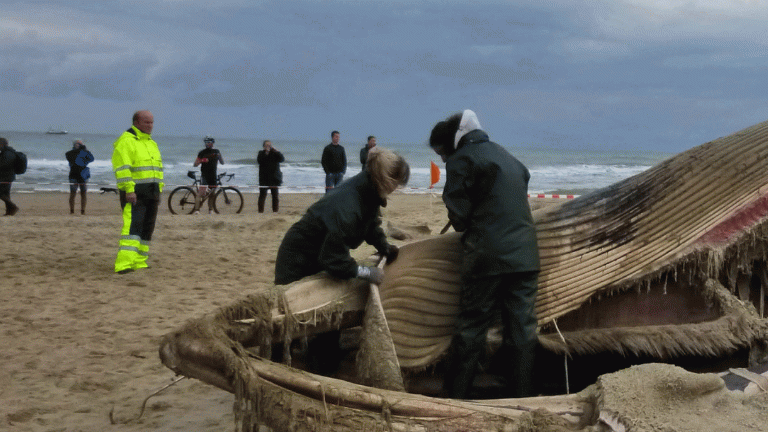
It sometimes happens that a large dead whale washes up on the Dutch coast, or dies in the waters off the coast. Naturalis Biodiversity Center then has the task to assist in salvaging the mammal and to preserve parts of the animal for scientific research. Here you will find more information about the role of Naturalis in a stranding.
RoleNaturalis
Naturalis has been commissioned by the Dutch government to process and decompose washed-up dead cetaceans. As manager of the natural history national collection, Naturalis has included interesting skeleton parts in the scientific collection for decades, for many years. By sharing this wealth of information, scientists worldwide can conduct research into the anatomy and evolution of whales, and the development and variation within the species.
Dissect on the spot
Because a whale is too large to take to Naturalis in its entirety, our whale team dissects the animal where it is stranded. In order not to damage the skeleton, the meat must be carefully cut loose from the bones. In addition to the skeletal parts, we also collect ribs, parts of organs, a tissue sample and worms and other parasites.
Insensitivenose
The members of the Naturalis whale team are really tough.
You must have special talents to be a member and one of those talents is an insensitive nose. Moreover, you are so surrounded by the smell that you will get used to it after a while. But the clothes worn are usually thrown away after use, because you will never get the smell out and you can so ruin your washing machine.
In short: applause for the members of the whale team!

Whale research
In the Naturalis collection, biologists are investigating whale bones to find out more about, among other things, evolution, anatomy and diseases. If we know more about how and where cetaceans live and how they end, we can better contribute to the protection of these species. Some aspects, such as what exactly they eat, what parasites they have and how they are put together, can only be learned from dead animals. In the event of a stranded dead whale, Naturalis cooperates locally with staff from the Faculty of Veterinary Medicine at Utrecht University, who are investigating the cause of death. In their laboratory they examine the organs and tissues for abnormalities, diseases and bacteria. And the employees of Wageningen Marine Research and Bureau Waardenburg are doing dietary research: they are studying the stomach contents, including the presence of plastic.
Frequently askedquesions
We get a lot of questions about whale strandings and which role Naturalis plays.
Has the whale protocol been followed?
- Of course the whale protocol is always followed, otherwise Naturalis is not allowed to take action.
Suppose there is amber in a sperm whale, where does it go or whose is it?
- The amber is always transferred to customs.
What do you do with the meat? Will that be destroyed?
- The meat is processed just like slaughter waste. Energy is generated with the heat released during incineration.
What do you do with the stomach of a whale?
- The stomach is examined by pathologists from the University of Utrecht and Wageningen. Then it is removed and destroyed.

